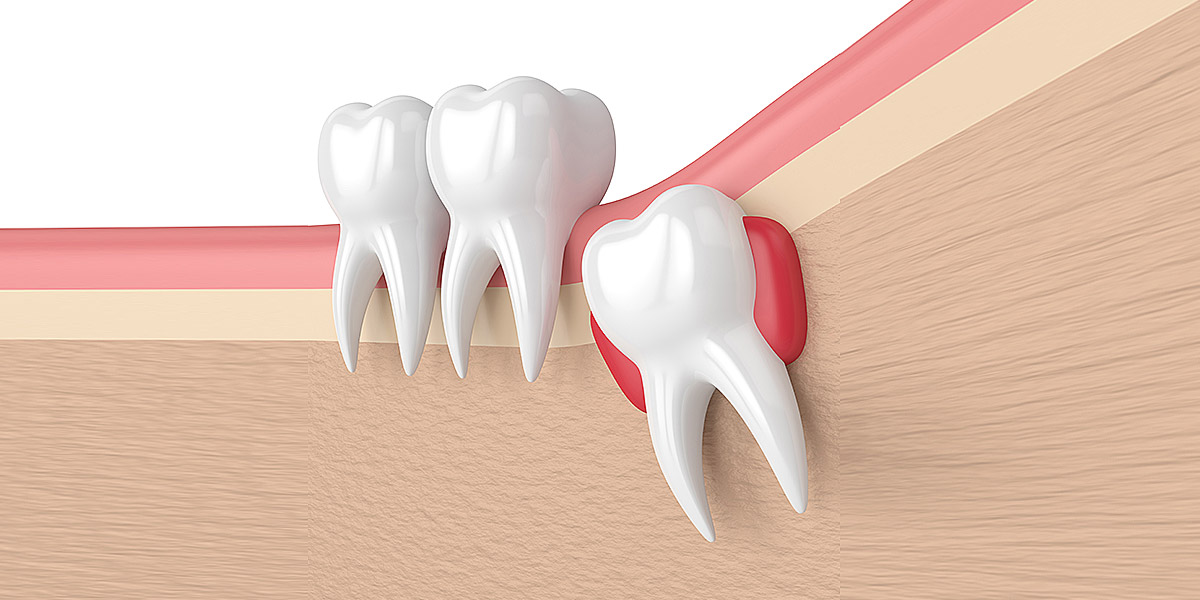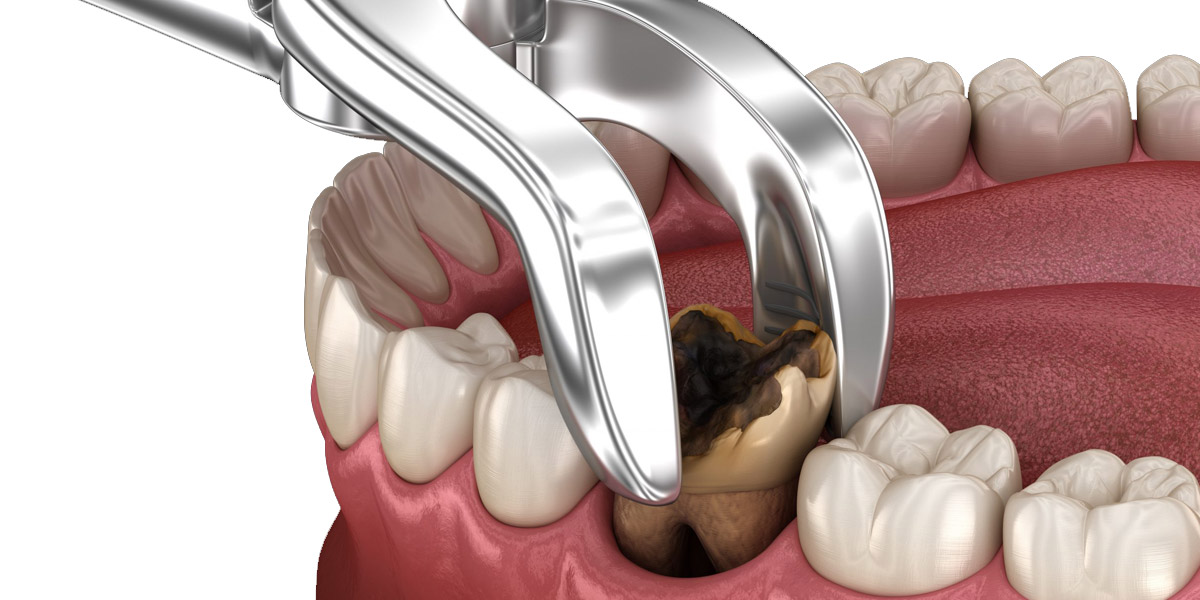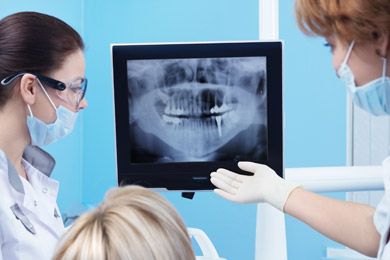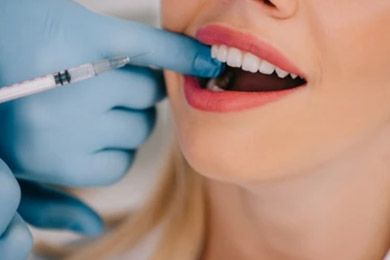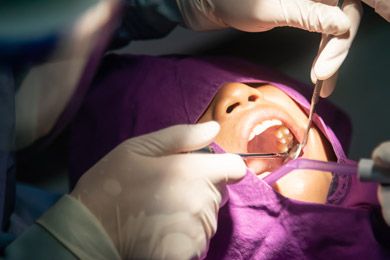Tooth extraction is performed by dentists as a last choice. Because dentists prefer dental treatments that protect the healthy tooth tissue as much as possible. Especially tooth loss in the anterior region may also cause aesthetic concerns. Fortunately, there are ways to treat lost teeth.
Teeth damaged by decay or fracture can be treated with fillings or veneers mostly. However, if the damage of the tooth is too serious for restoration, your dentist may decide to extract the tooth as a last option.
The gum problems can cause the bone that surrounds the teeth to melt. As a result, the tooth loses its support and wobbles. In cases where gum treatment is insufficient, teeth may need to be extracted.
Sometimes the teeth cannot erupt into the mouth and remain embedded in the jawbone. It is most commonly seen in wisdom teeth. Impacted wisdom teeth can lean against the teeth next to them and cause decay, erosion of the tooth roots or infections in the jawbone. Not all impacted teeth need to be extracted, but impacted teeth that cause such damage should be extracted. Therefore, follow-up of impacted teeth is recommended annually.
If the wisdom teeth do not erupt completely, the gum covering the tooth may become infected. It is called pericoronitis. Pericoronitis can cause recurrent problems such as pain, swelling, jaw locking and fever. In this case, the tooth must be extracted. In cases where wisdom teeth completely erupt, they may also need to be extracted. Because it is so far back, it can be difficult to brush. In cases the teeth erupts towards the tongue or cheek, sores may occur due to biting of soft tissue. When the wisdom teeth erupt, they may push the other teeth and cause crowding.
If the tooth decay is very serious, the tooth loses its vitality. An infection may occur at the root if the tooth is not treated when it has lost its vitality. It usually reveals itself with chewing pain, acne-like swelling and abscesses in the gum area, and sometimes spontaneous pain. If the infection does not cure with root canal treatment, the tooth must be extracted.
In most of the severe crowding cases, there is discrepancy between teeth size and space available for them. Orthodontist may suggest extraction before orthodontic treatment to manage crowding. At the end of treatment, space of extracted teeth will be completely closed without need for any additional treatment.
The dentist may decide on tooth extraction treatment as a last option, because ...
Tooth extraction is a surgical intervention in which the tooth is removed from the jawbone and removed from the mouth under local anaesthesia without damaging the surrounding tissues.
Tooth extraction may have some risks and complications. If the adjacent tooth has large fillings or veneers, fillings and veneers may be damaged during tooth extraction. Fractures of the adjacent teeth can occur very rarely. Especially after wisdom tooth extraction, cold and hot sensitivity may temporarily increase in the adjacent teeth. When the healing is complete, there wont be sensitivity.
Recovery is not complete if a clot does not form after extraction. In this case, the patient may suffer from severe pain called dry socket. Since the area of the extracted tooth does not form a clot, it appears white and bad breath occurs. If these symptoms are present, a doctor should be consulted immediately. Dry socket can be seen mostly in patients who smoke, use hormone-containing drugs such as oral contraceptive and use bisphosphonates.
Nerve damage is unlikely to occur during the extraction of impacted wisdom teeth. If your wisdom teeth are very close to the nerve, your doctor will share this information with you before the extraction. Minor nerve damage usually heals spontaneously. In rare cases, it is permanent.
Sinus exposure can occur during the extraction of upper molars. If there is such a risk, your doctor will inform you before surgical tooth extraction. If the sinus exposure is small and there is no infection in the sinus, the gap closes with medication. In large openings, surgical procedure may be required.
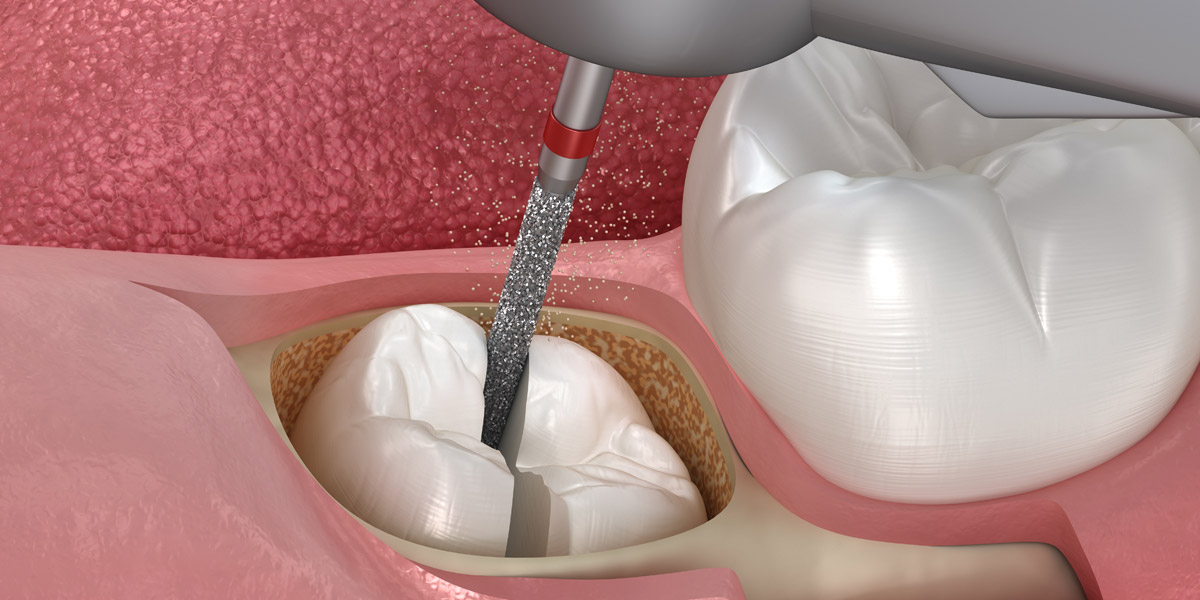
The gap formed after tooth extraction has negative effects on oral and dental health. The adjacent teeth may shift towards the extraction cavity. It causes loss of jawbone, chewing difficulty, malocclusion and aesthetic concerns. There are many options for filling the cavity after tooth extraction. The most ideal of these is dental implants. Dental implants are a titanium screw that is placed in the location of the extracted tooth on the jawbone and acts as a tooth root. After the tooth is extracted, the jawbone is expected to heal. Then implant treatment is performed. However, if the bone structure is suitable and there is no infection, both tooth extraction and implant can be performed on the same day. One of the biggest advantages of dental implants compared to other treatments is the prevention of jawbone loss and its application without damaging other teeth.
In a dental bridge, the adjacent teeth are cut to fill the tooth gap. They are connected to each other with a bridge. Dental bridges are not removeable. It is performed in a shorter time compared to dental implants, but the adjacent teeth need to be cut and bone loss may occur where the extracted tooth is positioned over time.
If the patient does not prefer dental implants, removable prosthesis treatment can be applied in cases where there is a lot of tooth loss. It is less comfortable than fixed prosthesis. It is made by taking support from the remaining teeth. There may be losses in the jawbone as time passes. Dentures are removable.
In cases where the positions of the bone and teeth are appropriate, it is possible to close the extraction gaps with orthodontic treatment, especially for young patients. It takes longer time than other treatments and requires frequent control periods.
Tooth extraction prices may be comparatively lower in Turkey. The prices of other complementary treatments can also be listed in the mini price list, please check it.
| Dental Treatment Prices in Turkey | |
|---|---|
| Consultation | Free |
| Panaromic X-ray | Free |
| Dental Tomography | Free |
| Examination | Free |
| Local Anesthesia | Free |
| Tooth Extraction | £ 30 |
| Complicated Tooth Extraction | £ 40 |
| Impacted Tooth Extraction | £ 125 |
| Impacted Tooth Extraction with Bone Retention | £ 170 |
| Bego Dental Implant with Dental Crown | £ 590 |
| Alpha-Bio Dental Implant with Dental Crown | £ 590 |
| Nobel Dental Implant with Dental Crown | £ 800 |
| Straumann Dental Implant with Dental Crown | £ 875 |
| Metal Porcelain Crown (per tooth) | £ 130 |
| Zirconium Crown (per tooth) | £ 195 |
| emax Crown (per tooth) | £ 325 |
| Denture (per jaw) | £ 475 |
The healing period after tooth extraction depends on post-treatment care. In order to shorten the healing time after tooth extraction, the patient should pay attention to ....
A panoramic X-ray image is taken and then a detailed examination is performed. If your dentist decides to extract the tooth, she will ask for information about your general health. Detailed and accurate information should be given to the dentist at this stage. It prevents negativities to be faced after treatment.
Local anaesthesia is usually applied to the area where tooth extraction will be performed and it is waited for a while to numb. General anaesthesia or sedation may be preferred in children, disabled people or people with some systemic disorders. Tooth extraction is painless with local anaesthesia, but the pressure applied to the tooth can be felt.
First dentist will gently loosen your teeth, then remove it from bone with special medical instruments. In some situations where it is not possible to extract the tooth at once, it may be necessary to divide the tooth and remove it. Usually, ordinary tooth extraction does not require stitches, rarely one or two stitches may be needed.
Firstly, the dentist makes an incision on the gum, then reaches the tooth by lifting some bone. The dentist separates the tooth from the jawbone once or by splitting the tooth. Stitches are required after surgical extraction. Dentists may want to check the healing, usually in difficult extractions, and a second visit may be necessary after about a week.
When the dentist does not require a control appointment, the treatment is completed in a single session while using self-melting sutures. After the extraction of the impacted wisdom tooth, the patient can return to his routine life immediately. Unlike ordinary extraction, some swelling, pain and bruising may be observed. If the patient is well cared for after surgery, these negativities will disappear in a short time.
The healing period after tooth extraction depends on post-treatment care. In order to shorten the healing time after tooth extraction, the patient should pay attention to the article above which is headed "What to do after tooth extraction?"
We do our best to ensure that our patients' dental treatments are comfortable. Keeping their satisfaction at the highest level is very important to us.
Please fill the form, we will contact to you for online dental consultation.
Please fill the form, we will contact to you for online dental consultation.




